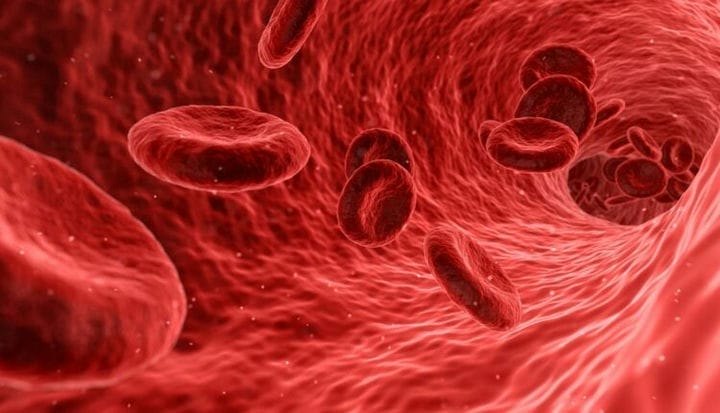Blood is a liquid tissue that circulates through the vessels and transports gases, nutrients, vitamins, hormones within the body.
Homeostasis – the constancy of the composition and physico-chemical properties of the internal environment of the body.
The amount of blood in the body of an adult is normally 6 – 8% of body weight and is approximately 4.5 – 6 liters.
Blood consists of a liquid part – plasma and cells suspended in it – formed elements: erythrocytes, leukocytes and platelets. The share of plasma accounts for 55 – 61%, the share of formed elements – 40 – 45%.
Blood functions:
1 Protective – participation in immunity;
2 Respiratory – transfer of oxygen from lungs to tissues and from tissues to lungs CO2;
3 Transport – the transfer of nutrients, metabolic products, minerals;
4 Coagulation – blood clotting to stop bleeding;
5 Regulatory – regulation of water-salt exchange between blood and tissues;
6 Thermoregulatory – regulation of body temperature;
7 Immune – provides immunity.
Blood plasma is a clear yellowish liquid containing:
• Water – 90 – 92%,
• Mineral salts – 1%, of which sodium chloride – 0.9%,
• Glucose – 0.1%,
• Proteins – 8%.
Plasma proteins:
1 Albumins – bind nutrients, vitamins, medicinal substances;
2 Globulins – transport of fats, glucose, are involved in immune processes;
3 Fibrinogen – is involved in blood clotting.
Erythrocytes – red blood cells, having the shape of a biconcave disk, devoid of a nucleus, contain hemoglobin. Formed in the red bone marrow, destroyed in the spleen and liver. Life expectancy – 100 – 120 days.
The normal amount in 1 μl (mm3) of blood in men is 4-5 million, in women 3.7-4.7 million.
Contains hemoglobin – a pigment that performs a respiratory function due to the transfer of O2 and CO2.
Physiological compounds of hemoglobin:
• oxyhemoglobin – connection of hemoglobin with oxygen,
• reduced hemoglobin – hemoglobin that gave up oxygen,
• carbohemoglobin – connection of hemoglobin with carbon dioxide.
In the blood of women, hemoglobin is on average from 12 to 14% (120 – 140 g / l.), in men, on average from 13 to 16% (130 – 160 g / l.)
ESR – erythrocyte sedimentation rate – a value that reflects changes in the physico-chemical composition of the blood. It is determined by the value of the plasma column released from erythrocytes during their sedimentation in 1 hour in a special pipette of the Panchenkov device. Normally, ESR is equal to:
For men – 1 – 10 mm / hour;
In women – 2 – 15 mm / hour;
In pregnant women before childbirth 40 – 50 mm / hour.
An increase in ESR occurs in all inflammatory processes. ESR depends on the composition of plasma proteins (globulins and fibrinogen).
Hemolysis is the destruction of the erythrocyte membrane and the release of hemoglobin into the blood plasma (the blood becomes transparent, “varnished" blood).
